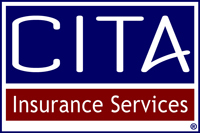-
Property & Casualty Agent E&O Prevention
Property & Casualty Agent E&O Prevention
11.04.2016Preventing Errors and Omissions (E&O) in a property and casualty office is an issue that must be fully addressed in order to reduce the risk of facing a lawsuit – and the potential financial burden that comes with one. The sheer mass of forms and paperwork being handled every day in an insurance office and the detailed information that needs to be clearly conveyed to clients means that mistakes are possible. There is a strong need for insurance companies to take steps to reduce their E&O problems, and to take the necessary preventive action.
What Causes E&O?
In an E&O case, property and casualty agents, or life and health insurance agents or their staff, get accused by a customer because they believe that some service or piece of information, or lack of it, was given them, leading to a loss. When this occurs, and it does often, E&O insurance coverage protects agents against malpractice claims, as well as the court costs involved.
There are many possible causes of E&O, but most of them are the result of providing information in a hurried or careless manner, thus causing a lack of accuracy. Another cause is not providing enough information. Although the resulting error may be unintentional, the client may (and sometimes does) misinterpret the meaning.
Steps to Help Minimize E&O
Policies within an agency or office need to be established that cover any public or client interaction. It is also advisable that notes be taken on each phone call, email or other form of correspondence. These notes should be reviewed to recognize potential issues so that the necessary action steps are taken in a timely manner and not overlooked.
Ensure that insurance agents and staff follow the proper procedures for gathering information and recording it accurately. Everything needs to be documented. This documentation can prove very valuable if the case should ever come to court.
When dealing with a potential client or an existing one, be sure to communicate with them any details about the policy you are offering. Providing too much information is not going to hurt you – or them, but it could help prevent an E&O case of misunderstanding.
In your presentation to the client, it is necessary to talk about the financial needs of the client in order to understand the need for risk management. Failing to do so could lead to inadequate coverage. To avoid this, analyze all their needs, and make recommendations of products to meet them. If the client is not interested, get confirmations in writing that the client has declined to accept certain coverage.
Account for all money quickly that has been received by a client.
Do not expose the fact to your clients that you have E&O coverage. You also want to be careful about boosting your level of expertise on your business card, since it leads to higher expectations.
Never tell the client that they will be covered or that coverage has started, until they have been officially accepted by the company. Failure to obtain the desired coverage is a large cause of E&O claims.
Check and double check everything. Where risk may be involved, be sure to verify accuracy.
Avoid having your clients get insurance from an insurer with any grade less than B+. Your E&O policy may not cover it. If the company goes bankrupt, it could lead to a lawsuit.
Ensure that you are friendly to your clients and that you respond quickly to questions – the same day should be the rule. They will be less likely to sue someone that they believe is truly friendly and helpful. Frequent communication helps, too.
Be sure to file claims quickly with the insurance company. Then follow it up and keep the client informed.
Property and casualty agents, and other insurance agents, need to carry E&O. With the right coverage, you are equipped to stay in business in case a lawsuit does come up but you also get the peace of mind of knowing that you have taken all the necessary steps to reduce your business risk.
All information provided in this blog is for informational purposes only. The sources used are presumed accurate. CITA Insurance Services, Brown & Brown Program Insurance Services, Inc. and Brown & Brown, Inc. will not be liable for any errors, omissions, losses, injuries or damages arising from its display or use and will not assume responsibility for any misguided information. No guarantees are implied.
